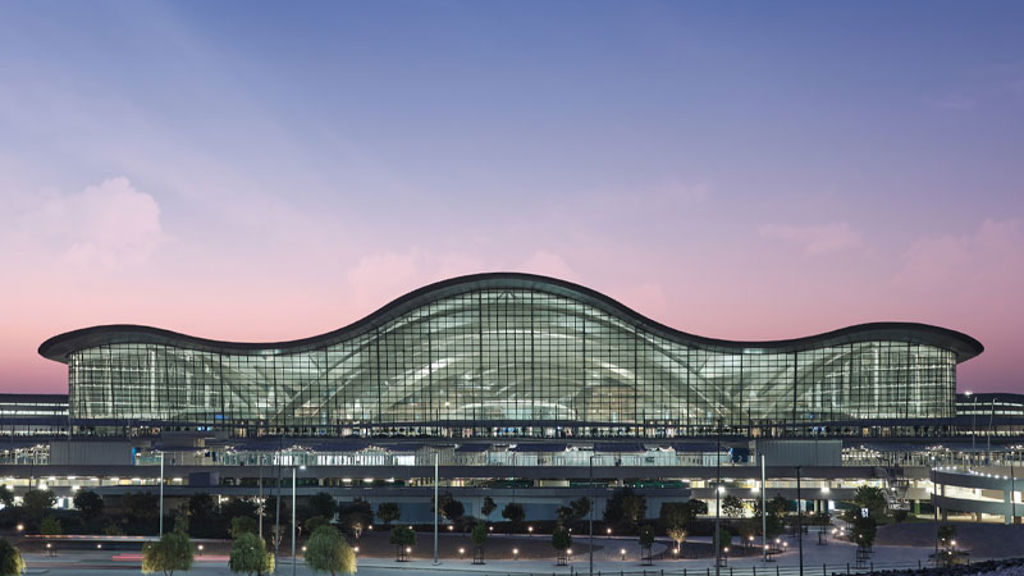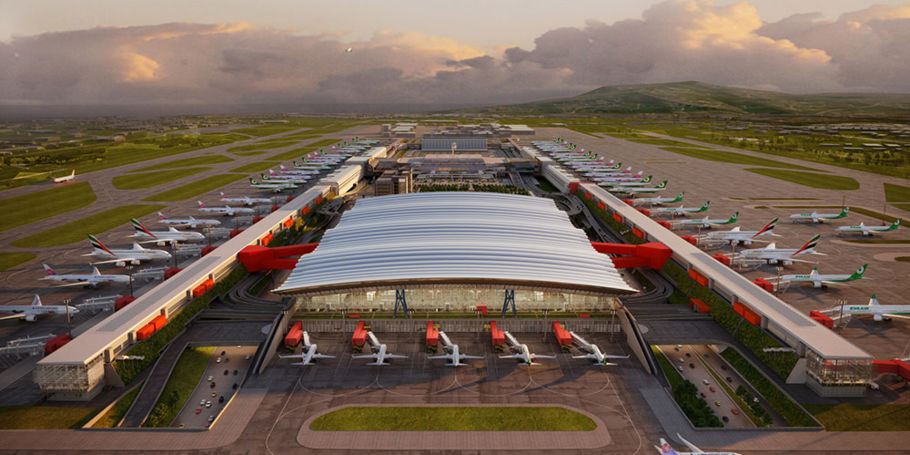Improving operational excellence to create a best-in-class passenger experience at Oregon’s largest airport
Portland International Airport's Terminal Core Redevelopment

Owned and operated by the Port of Portland, Portland International Airport (PDX) is consistently celebrated for its top-rated passenger satisfaction in annual industry surveys of US airports.
The airport’s runways, gates, and concourses have the capacity to serve future passenger demand for the next 10 years or more, but the Port’s Planning and Operations teams recognized that essential functions in the main terminal, including the departures lobby, baggage handling system, security checkpoints, and baggage claim, would be undersized to meet future demand. PDX’s single terminal is spacious but lacking in flexibility, with its pre-9/11 configuration including retail and concession outlets located before security.
In 2015, the Port of Portland commissioned ZGF Architects, along with PAE, KPFF, Arup, and a team of 30 subconsultants to undertake the PDX Terminal Core Redevelopment (TCORE) project to increase the capacity, flexibility, and resilience of the airport. The goal was to improve the passenger experience through the use of healthy materials and the latest digital tools to reduce the airport’s carbon footprint and energy usage.
To redevelop and optimize the terminal, ZGF assembled a local team familiar with PDX, and Arup was invited to offer a global perspective leveraging both our wide-ranging technical aviation knowledge and our international expertise.
TCORE is the keystone project in a $2 billion program known as PDXNext. This has included redevelopment of Concourses B and E, a new rental car and ground transport center, and a relocated Port police and emergency facility. With 1,200,000 ft2 of floor area, 70% of the TCORE project is comprised of existing spaces remodeled within buildings constructed over 50 years ago. The remaining 30% has been created by expanding into the space of two aircraft gates and is known as the “Western Expansion” (WE).
In collaboration with the project team, Arup provided structural and mechanical engineering design services from concept through schematic design. We supported all design phases with consulting services in sustainability, aviation planning, aviation analysis, passenger flow modelling, energy modelling, acoustics, audiovisual systems, security technology, wayfinding, logistics, and geothermal systems. Arup’s design team is providing construction administration support on the project until completion, scheduled for Winter 2025/2026. The first phase of the terminal redevelopment opened in August 2024.
Separate from the design project, Arup has been delivering a full suite of operational readiness, activation, and transition (ORAT) services to help guide organizational transformation to facilitate successful growth and operations in the new space.



Listening before launching
To inspire the best design and construction phasing ideas, the Port of Portland and key members of the design team toured airports in the United States and internationally. Talking with aviation officials in Los Angeles, Calgary, Oslo, Amsterdam-Schiphol, Newark, San Francisco, New York, Columbus, Tampa, Orlando, Charleston, and Boston, we gathered insights on major aviation redevelopment projects to identify what went well and what did not. This initial investment in time has been invaluable — listening to airport authorities speaking with candor has informed our optimal design process, as well as guiding construction phasing and temporary facility strategies for minimal impact to the passenger experience.
Sustainability strategies
The Port of Portland has stringent energy and carbon requirements for the Airport. To improve performance and minimize emissions, the design team proposed an open-loop ground source heat exchange system, unusual for an airport of this size. The system uses the stable year-round groundwater temperature to make heating and cooling much more efficient than conventional boilers and chillers while eliminating the use of fossil fuels. Arup also produced computational fluid dynamics (CFD) models of the terminal spaces to get a more accurate understanding of temperature comfort based on area, activity, and solar heat gain through the glazed façade and roof.
The entire TCORE area is covered by a new long-span mass timber roof, designed by ZGF in collaboration with Arup and KPFF and using materials responsibly sourced from locally managed forests. Arup’s sustainability consultants assisted with the procurement of locally sourced and sustainably harvested timber for the new roof structure. Beginning in Spring 2021, the 392,000 ft2 roof was fabricated on-site and moved into place in sections, each the size of a football field, from September – December 2022. The new roof highlights Oregon’s timber industry, the airport’s partnerships with the community, and the carbon benefits of sustainable forest management.
We also helped select and specify healthy interior finish materials to avoid toxic substances and support the airport’s goals for health, wellness, and passenger experience.
Layers of logistics
Our logistics team found ways to reduce waste and increase efficiency with shortened routes within the terminals and between facilities. The team took a detailed look at the existing deliveries system, loading docks, and how goods are distributed and stored throughout the building to review operational parameters and suggest improvements. This analysis included the integration of a new employee security screening strategy, a major logistics challenge new to US-based airports of this size. This requires changes to access control protocols and re-routing the delivery of goods and the removal of waste and recycling.
As construction displaced the existing loading docks, Arup helped design and commission a consolidated receiving and distribution center (CRDC) away from the terminal complex, where goods are received, screened, sorted, and then delivered to the terminal using smaller trucks and vans. This is a first for the Port and allows greater flexibility in delivery and waste operations as well as reducing the required number of full-size loading docks.
The latest in digital
The Arup team provided best practice guidance in terms of passenger processing and security technology, analyzing examples from other airports while keeping up to speed on the latest TSA checkpoint standards. Arup demonstrated the more that common-use technology can be utilised, the more efficient the facility and spaces will be. Airlines and technology vendors have also been consulted in the process, resulting in hybrid solutions to meet future traveller needs.
Passenger flows and wayfinding
PDX is striving to provide a better passenger experience by reducing stressful prolonged processes and creating an inviting, inspiring environment. Arup developed real time pedestrian simulation models in MassMotion to show how passengers could circulate through the terminal, with these models allowing stakeholders to ‘see’ passengers utilizing the active space. Pedestrian simulation validated queuing spaces and flows through temporary configurations, eliminating proposals that would result in excessive crowding.
To facilitate pedestrian flows throughout, our Wayfinding specialists informed the design with intuitive navigation, positioning wayfinding messages, signage, and other visual cues to guide passengers through the terminal.
Readiness for day one
To help the airport and its staff feel ready and confident to welcome the public on the first day of operations, Arup provided comprehensive ORAT services for the first phase of opening in 2024. Arup managed the program, including developing an ORAT strategy and concept of operations; process mapping; training for over 1,000 frontline staff utilizing a range of delivery methods; and system activation tracking, testing, and trials. The team supported typically underrepresented operations groups by aiding a seamless transition to the new terminal footprint and instilling effective governance and stakeholder engagement throughout the project.
Gearing up for a successful opening of the new main terminal, Arup’s ORAT specialists led two public volunteer “dress rehearsals.” Our team coordinated 600 airport friends and family plus 1,800 members of the public, simulating real-life operations over the course of two days. The trials included a simulation of an emergency evacuation to ensure operational readiness and confidence no matter the situation.



KPFF / PAE
What we delivered
-
Upgrading Portland International Airport to meet modern standards of passenger experience.
-
Supporting delivery of a truly sustainable airport terminal.
-
Designing a 392,000ft² new mass timber roof.
Get in touch with our team
Projects
Explore more aviation projects:

Helping London Gatwick assess carbon emissions to drive sustainable aviation
Carbon emissions study for London Gatwick, United Kingdom

Redefining Japan’s future airport city
Narita Airport City, Japan

Transforming the travel experience at Zayed International Airport
Zayed International Airport Terminal A, United Arab Emirates

Crafting a New York–inspired atmosphere for passengers traveling through JFK’s global gateway to the world
JFK New Terminal One Art, Branding, and Digital Experience Program, United States of America
Get in touch with us
If you'd like to speak to one of our aviation experts about any of the issues raised on this page or a potential collaboration then please get in touch by completing the form.

